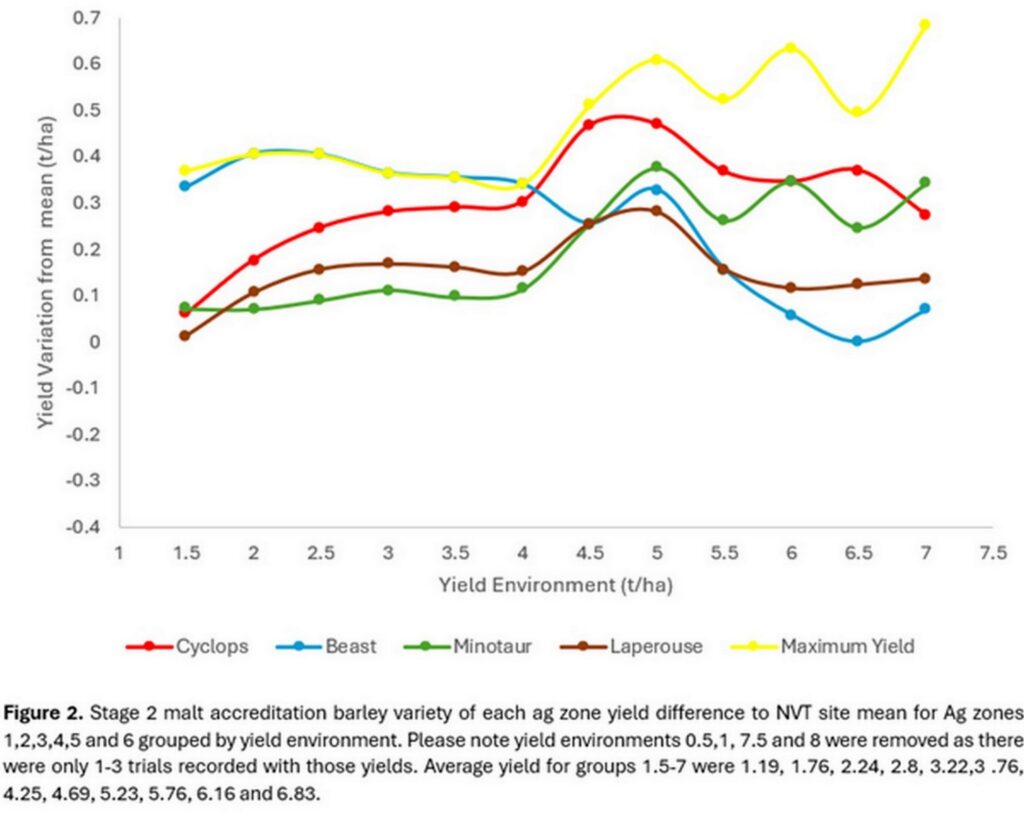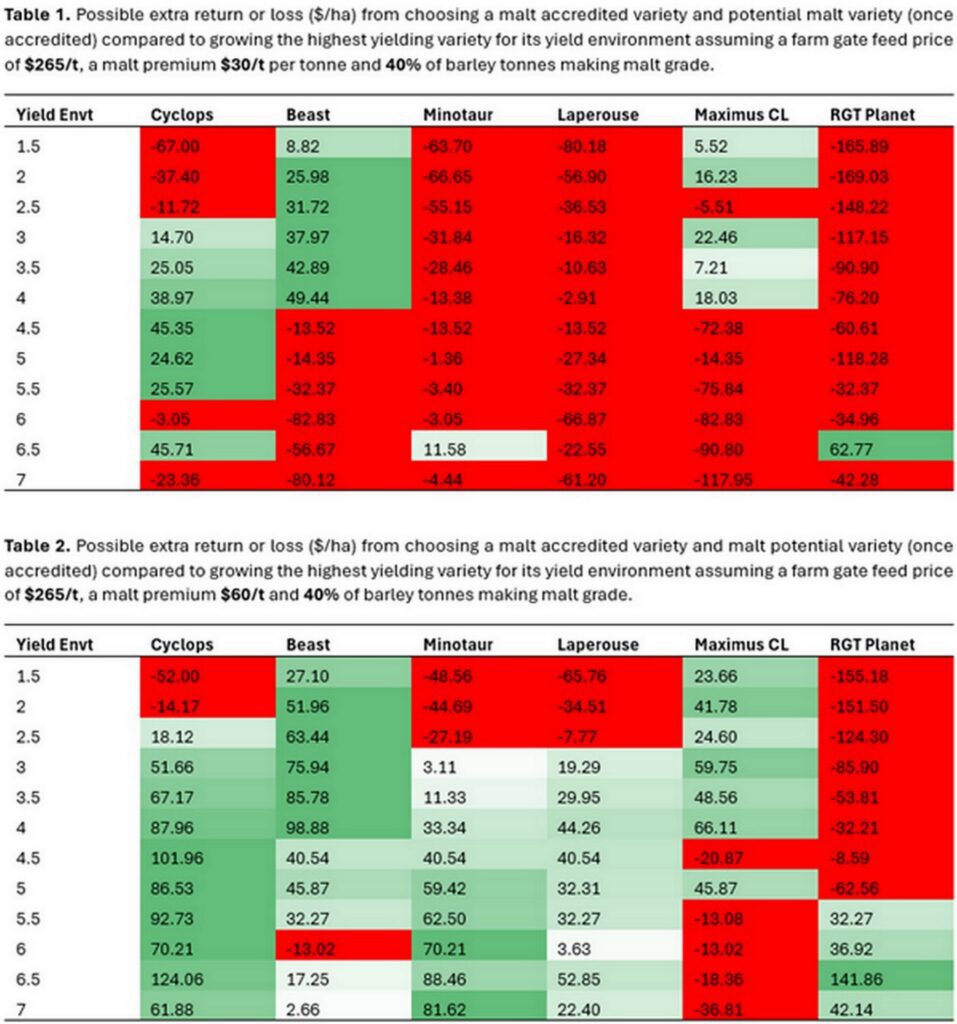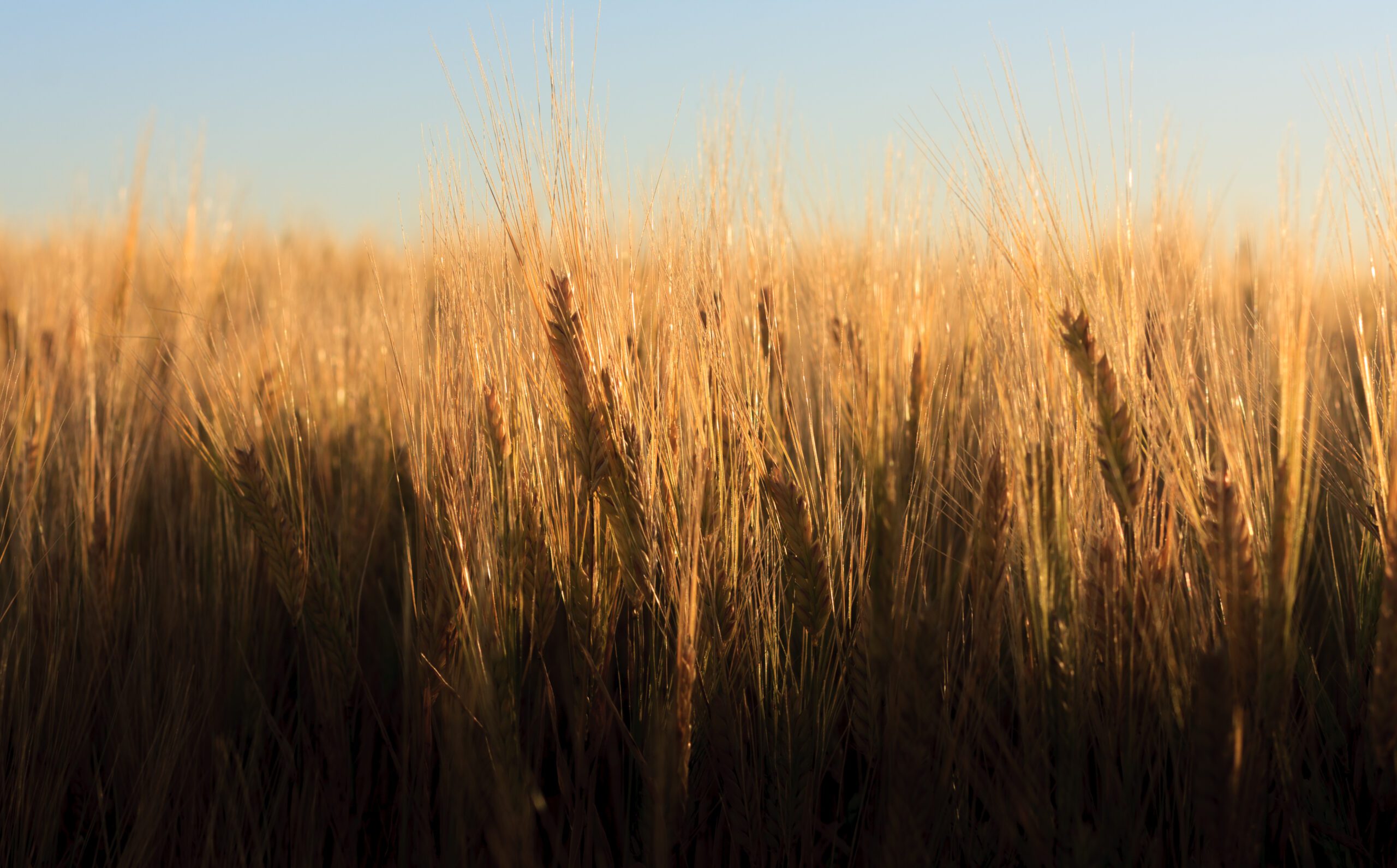Selecting a barley variety can be confusing. Should I select a lower yielding variety that’s malt accredited, and assume the malt premium makes up the yield difference? Or should I forget about chasing malt completely and go for a variety that has the highest possible yield, even though it will all end up on the feed stack? The following article will hopefully shed some light on these questions and help you make the right selection for your barley variety.
In Figure 1 below I have compared the yield of the best choices of current malt accredited varieties to the top yielding variety for each yield environment. From this graph we can see that at low end yield potential Maximus is very close to the top yield all the way up to the 4t/ha mark, given that these two yields are very close it would make sense to grow Maximus given the malt benefit doesn’t have a lot of yield to make up for. However, once the yield environment starts to increase past the 4t/ha point they start to diverge putting more pressure on the malt premium to make up the difference. Planet on the other hand is the opposite, at the low yield environment it is much further from the top yielding variety, but as the yield environment increase that gap tightens (I think in reality this gap should be much tighter towards the top end of yields, but this is not reflected in the NVT). Please note I have not included Spartacus, Bass and Buff as they fall below Maximus and Planet on this chart. It is important to compare varieties for your specific area so please just use this as a guide. This comparison can also be done for varieties likely to be malt accredited soon.
In Figure 2 (over page), I have done the same thing but with stage 2 accredited varieties, this may not change your decision this year but may help you in deciding what to bulk up for 2025. Please note that I have not included Zena as its yields are very similar to Planet and this variety will most likely be made redundant by Neo. For this chart we can do the same as above. Beast isn’t just close to the top yielding variety it is the top yielding variety up to the 4-ish t/ha yield environment so once accredited this would be the natural choice for these environments, you will really get the best of both worlds. Beyond that Cyclops would be the next choice and perhaps Minotaur at the top end. Again, please note It is important to compare varieties for your specific area so please just use this as a guide. So, how do we estimate the likely benefit or cost of selecting each variety?


From Figures 1 and 2 we can then use the difference between top yield for each environment and the yield of each variety to estimate a likely benefit (or cost) to choosing a malt accredited variety over a top yielding feed variety assuming a given farm gate price for feed barley, malt premium and percent malt grading achieved. We can also do this for stage 2 varieties to estimate their likely benefit (or cost) once they are accredited.
Table 1 further echoes my hypothesis earlier in the article when we looked at Figure 1. For a typical farm gate feed price ($265), malt premium ($30) and percent malt grade made (40%), Maximus has the most malt benefit up to 4t/ha and Planet may or may not give a benefit higher up the yield potential (I say yes). This is the same for Beast and Cyclops, Beast in the low end then swaps over to Cyclops upwards from 4t/ha, these varieties also giving a better return than Maximus. In this case other varieties don’t appear to have a benefit from selecting them for malt purposes. This can however change with a higher malt premium. In table 2. We see that by increasing that premium from $30/t to $60/t this makes a benefit much more likely than a cost.
The malt premium amount is the main driver for estimated extra return for choosing a malt accredited variety and chasing malt grading. A lower farm gate feed price and high malt premium pumps up our extra return for chasing malt grading whereas a high farm gate feed price and a low malt premium cuts down our extra return for chasing malt. When factoring in likely malt grade percentage achieved, a lower percentage can be outweighed by a greater malt premium and lower feed price, additionally a higher malt grade percentage achieved can compensate for a lower malt premium and higher feed prices. I would have liked to include a table for each one of these scenarios but didn’t want to over complicate things! For these calculations I based this around a low, medium, and high of $215, 265, 315 for farm gate feed price, $0, $30, and $60 for malt premium 20, 40 and 60% malt grade tonnes.
When making your choice it’s also worth thinking about the agronomic factors in growing feed vs malt barley such as seeding rate, nitrogen strategy, disease tolerance, seeding timing and chemical options. For example, if you’re growing a feed variety you can increase your seeding rate for increased yield and crop competition, which compounds giving you an even greater benefit. You also have the option to crop top feed barley for better weed control which will give you a $ benefit in the future.
I hope this has given you some insight and helped to make a decision that will benefit your business, I certainly learned a lot myself in the process. Thanks for reading.



